Hildreth Meière Documentary Series - Watch Trailer
Hildreth Meière Documentary Series - Watch Trailer
Commissioned by: Bertram Goodhue AssociatesIconographer: Hartley Burr AlexanderArtistic Collaborator: Hartley Burr AlexanderMedium: marble mosaic set into inlaid marbleExecuted by: De Paoli; Sunderland Brothers
Hildreth Meière’s design for the floor of the foyer reflects the clarity of Alexander’s conception of it as a procession leading from the vestibule to the rotunda.
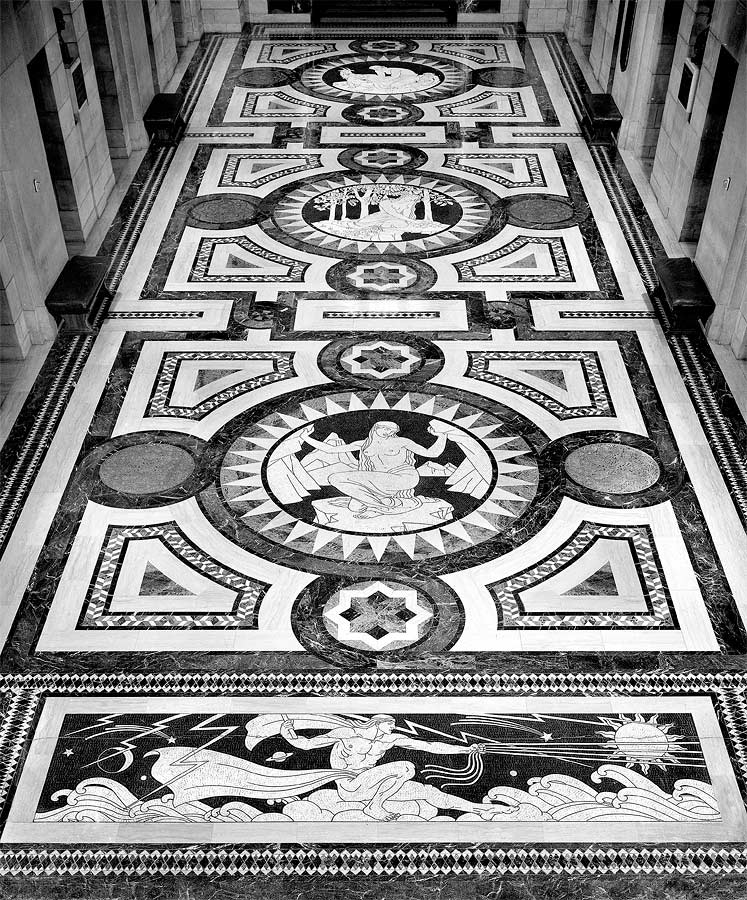
Foyer floor leading from vestibule to rotunda. Photograph by Sid Spelts, c. 1990. Nebraska Capitol Collections
At the threshold of the foyer is a floor panel depicting the Genius of Creative Energy, Meière’s first full-blown Art Deco design at the capitol.1 Alexander specified that Meière was to depict the Genius of Creative Energy with “lightnings ruling the four elements.” In his right hand, the Genius brandishes a lightning bolt. Grasping the reins of a powerful unseen force with his left hand, he is propelled across the lightning-charged sky.

Genius of Creative Energy, study in gouache and ink
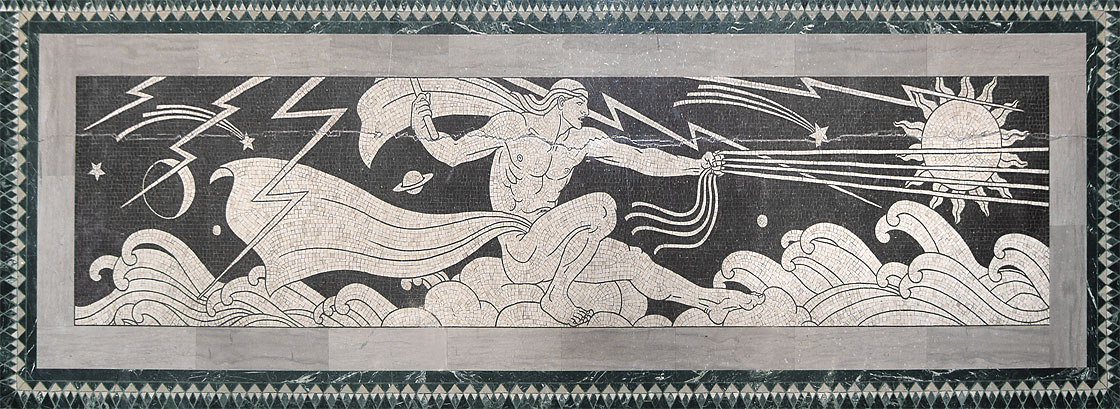
Genius of Creative Energy in marble mosaic
The Genius is followed by a floor medallion in the center of each of the foyer’s three bays. They represent the Spirit of the Soil, the Spirit of Vegetation, and the Spirit of Animal Life2. Alexander described the medallions as symbolizing “the natural foundation of human life, and the successive steps in creation, following the cosmic symbols of the Vestibule.”3
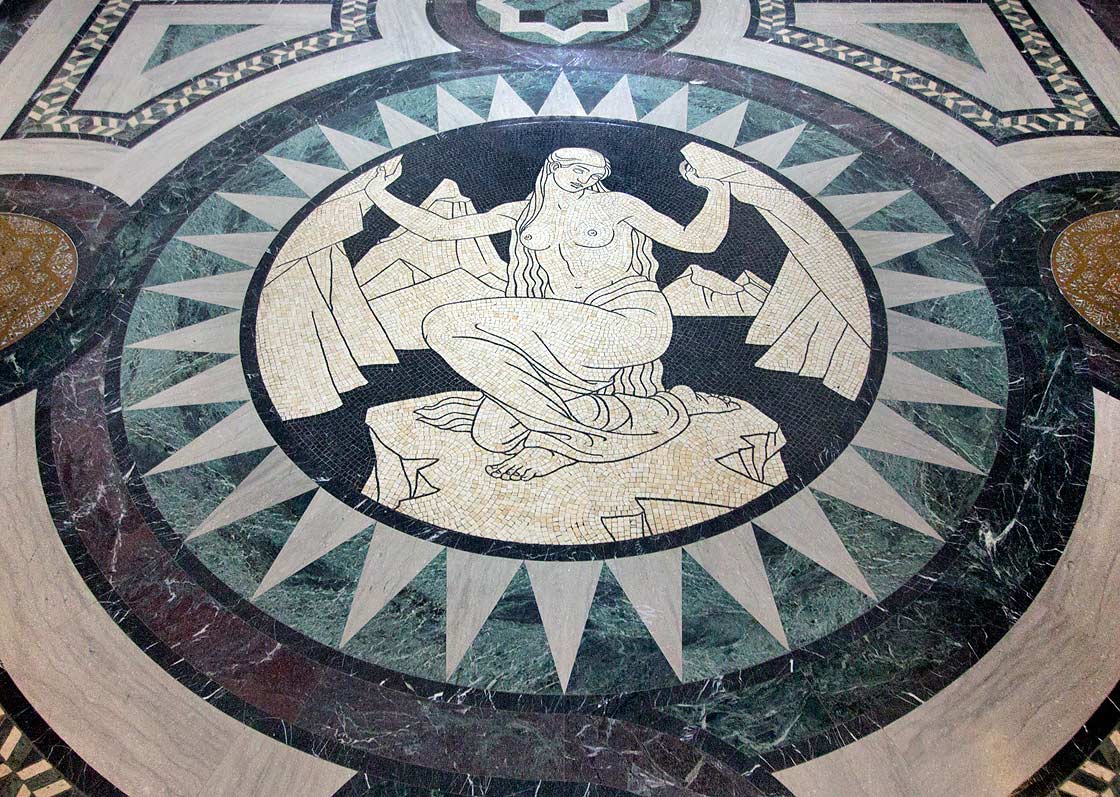
Spirit of the Soil
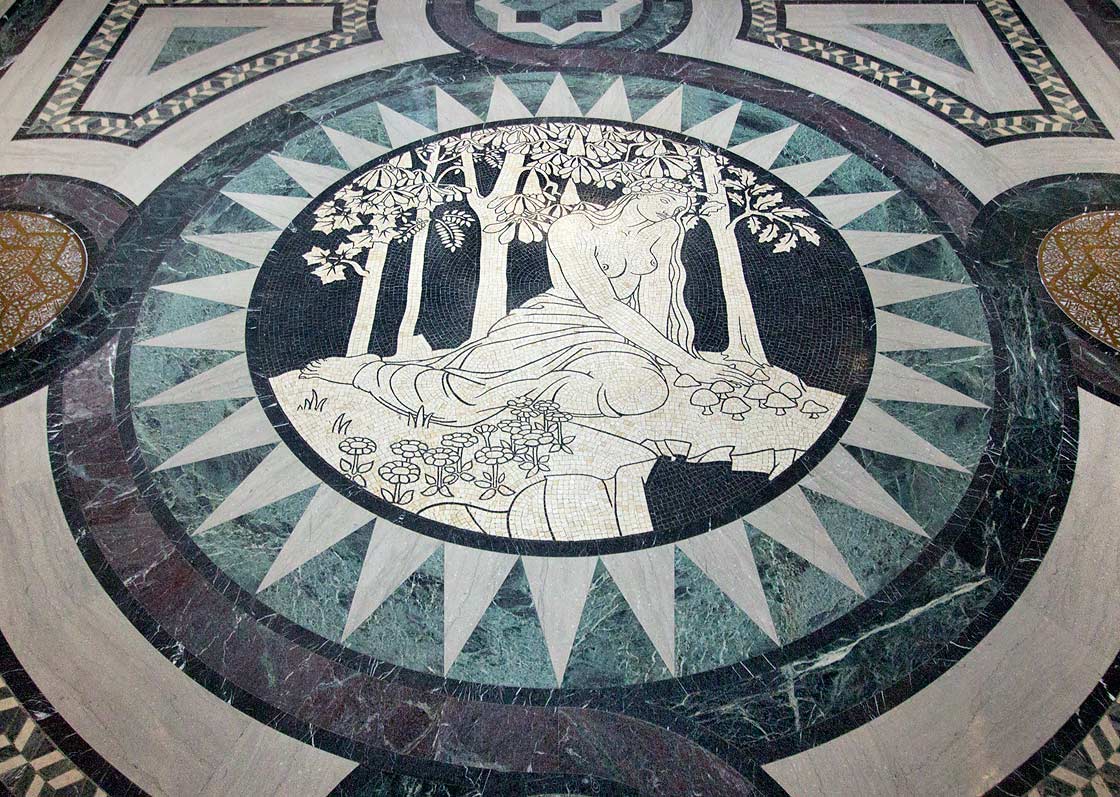
Spirit of Vegetation
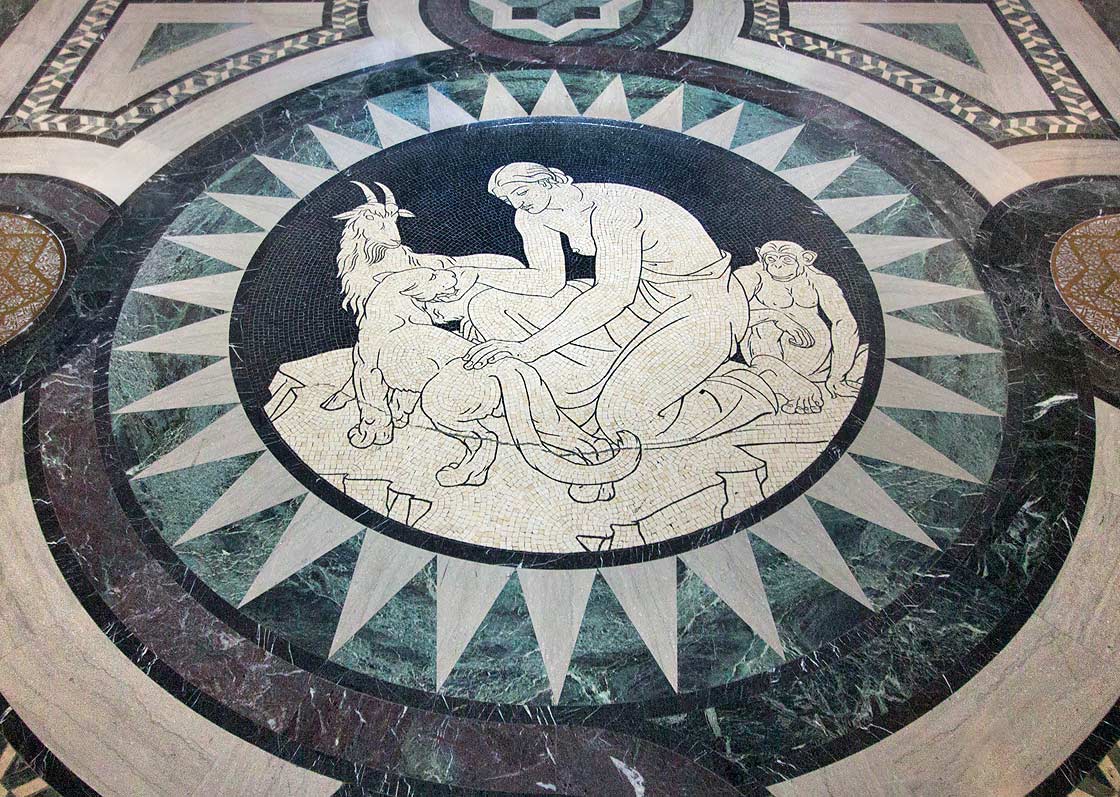
Spirit of Animal Life
Harry F. Cunningham, an architect with Bertram Grosvenor Goodhue Associates who worked on the capitol, explained how the floors were created:
Large-scale mosaic was used, the tesserae being about ¾” square, of black marble and buff marble. Dr. Alexander determined the subjects for the panels and Miss Meière made the cartoons, the final ones being drawn at full-size, with a brush, on heavy paper. Some of the brush-drawn lines were thick in spots and thin in others—they were what the Japanese painter would call “living lines.” The patient workmen in de Paoli’s shop [in New York] chipped away at the little squares of marble until they could lay pieces on the lines and exactly reproduce them in the stone. The stones were pasted down onto...brown paper cartoons [which had been traced and reversed from Meière’s original designs] and then cut up for shipping to Lincoln. Out in the Capitol, they were laid [mosaic side] down in their grout, and—when the paper was removed—the pictures were there in their “living lines,” their buff and black squares exactly as they had been drawn with the brush on the heavy brown paper in Miss Meière’s studio.4
Sunderland Brothers executed the inlaid marble.
For a full discussion, see Catherine Coleman Brawer and Kathleen Murphy Skolnik, The Art Deco Murals of Hildreth Meière (New York: Andrea Monfried Editions, 2014): 63-65.
Hartley Burr Alexander, “Nebraska State Capitol: Synopsis of Decorations and Inscriptions,” unpublished ms., n.d., Office of the Capitol Commission, Nebraska Capitol Collections, RG01 S02 B11 F36, p. 20.
Alexander, p. 18.
Harry F. Cunningham, “A Record of Successful Experiments,” American Architect 145:2626 (October 1934): 15, quoted in Brawer and Skolnik, 65.